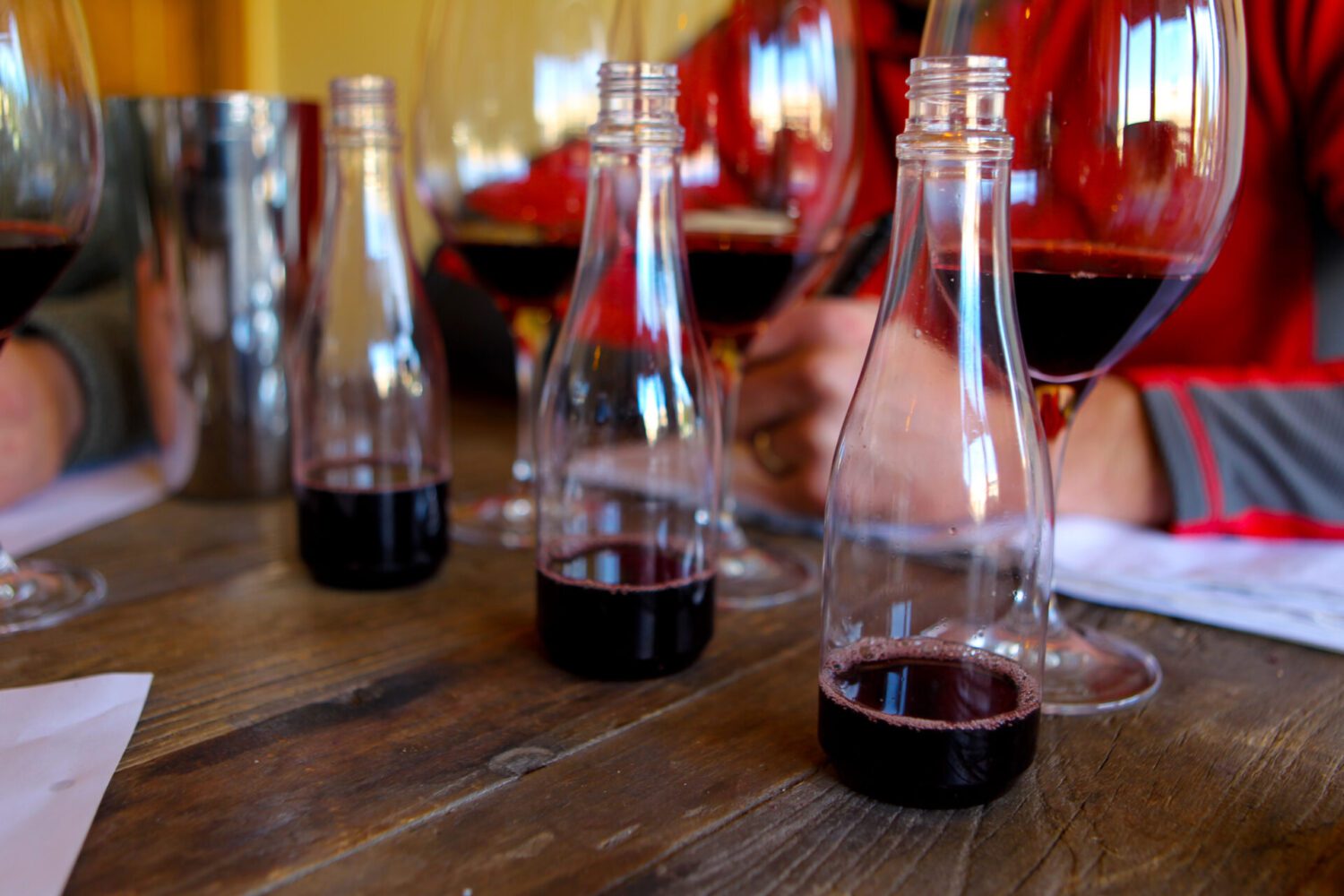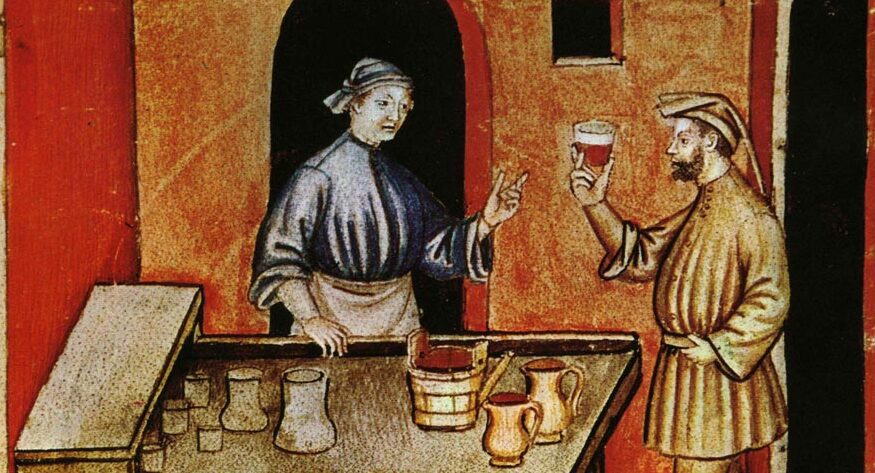
The Art of the Blend: Making Cuvée Wine
What is a cuvée wine? How are wines blended? What blends are considered cheaply made versus carefully crafted? Let’s dive in!
First, picture the iconic scene from the 2004 comedy movie Sideways. Paul Giamotti’s character, Miles Raymond, heads into a Santa Barbra restaurant with his lookin’-for-a-good-time pal (Thomas Hayden Church) and declares with utter disgust, “If anybody drinks Merlot we’re leaving! I’m not drinking any ***** Merlot!”
Poor Merlot. The reputation of a beautiful old-world grape was forever tarnished by One line in a fictional movie tarnished the reputation of a beautiful old-world grape. Meanwhile, the impact on wine producers was very real. Dubbed “The Sideways Effect”, Merlot revenues immediately dropped while Pinot Noir enjoyed a 170% spike the following year.
But here’s the kicker: In an ironic twist that might surprise both Sideways fans and budding oenophiles alike, Miles’ holy grail bottle of 1961 Chateau Chevel Blanc (a Bordeaux Grand Cru) – the one he guzzles straight from the bottle while devouring his burger in a fast food restaurant – is a blend of Cabernet Franc and Merlot! Do you think Miles knew his beloved wine was “tainted” with Merlot? Or was his palate sophisticated enough to recognize the importance of the old-world grape in its proper place?
Defining a Wine Blend
When it comes to wine, the old saying is true. Few of us are experts and half of them are faking it. The joy in wine is simply to enjoy it, to explore different varieties and terroirs, and to engage with others who share the same joy. The fact is, a majority percentage of wines adored throughout history and still today are a blend of some kind.

Varietals that can create a Rhône Blend. Check out WineFolly’s article for a breakdown of all wine blends.
Blending wines is an art and a science. One poorly crafted cuvée can have the same impact on you as an infamous line in a movie. Still, blending has created some of the finest wines ever made, including:
- Red and White Bordeaux
- Super Tuscans
- Most Champagnes
- Rhône and Châteauneuf du Pape
- Port
The classic “Bordeaux Blend” contains any combination of Cabernet, Merlot, Cab Franc, Petit Verdot, or Malbec. In another definition, a bottle of 100% Syrah can be a blend of identical grapes from different vineyards and terroirs, crafted to create an experience unique to that producer. This is where the love for a particular winemaker and winery begins.
So, how are blended wines made? What’s the difference between a blend and a cuvée? Should you even care?
A Quick History of Cuvée Wine
Wine blends have been around for hundreds of years. It began as a way for the vineyard owner to hedge against financial loss during the growing season. This is why the word “blend” can still have a negative connotation. Specific varietals were chosen based on their performance across climate conditions and the timing of harvest. By blending, the vineyard owner could guarantee consistent quality of wines within the framework of their land.
As time went on and winemaking techniques grew more sophisticated, blending changed from a way of financial survival to an art of the craft. Today, some of the most acclaimed and popular wines produced are blends. Even a bottle labeled “Cabernet”, for example, is only required to be 75% true Cabernet. Our Cabernet at Donelan is 95% Cab and 5% Cab Franc.

Medieval Winemaking, courtesy of Culinary Historians of New York
Assemblage, blend, cuvée, Meritage, and coupage are all words that describe a wine made from multiple varietals. What’s the difference? They basically mean the same thing but originated in different parts of the world. For instance, Meritage describes very specific old-world grapes from Bordeaux. Those grapes include Cabernet, Cabernet Franc, Petit Verdot, plus Merlot, Carmenere, and Malbec, all blended to create a distinct Bordeaux-style blend.
Cuvée – today’s more popular term – has two main meanings. The term originally referred to the pressed juice used to produce champagne, but it evolved to also refer to a blended wine of superior quality. You’ll see “cuvée” on the labels of both sparkling and still wines to reflect their fine blended style.
The Art and Science of the Blend
The goal of a blend is for its new and beautiful whole to be greater than the sum of its parts. Through blending, characteristics like acidity, tannin, alcohol content, and residual sweetness must be studied from start to finish. It’s through a superior cuvée that one can truly enjoy and experience a winemaker’s unique style and craft.
The skills required to make a superior cuvée cannot be understated. Today’s top winemakers fine-tune their craft toward top ratings for their wineries. This is the same as a top chef working tirelessly toward a Michelin Star for their restaurant. Some of the most meaningful awards in the US wine world come from critics like Wine Advocate’s Robert Parker, Vinous’ Antonio Galloni, and Jeb Dunnuck. These experts provide a numerical rating and share tasting notes that help discern if a particular cuvée aligns with your palate and lifestyle.
Today’s Cuvée Confusion
The term cuvée began to identify a blended wine of superior quality. So if all blends can be called cuvées, then how can they all be superior? How do you distinguish between a truly superior product and what is, well, simply an average blend? In a modern world of learning and caring more than ever about how our food is made and identifying our preferences down to a brand level, so many of us still struggle with – or maybe just don’t care enough about – not only HOW our wine is made, but WHO is making it. Which cuvée is hand-crafted with purpose and which ones are created from literal leftover grapes? Does it even matter?
Donelan Winemaker David Milner answers these questions and more in next week’s Part 2 blog on Cuvée wines!




